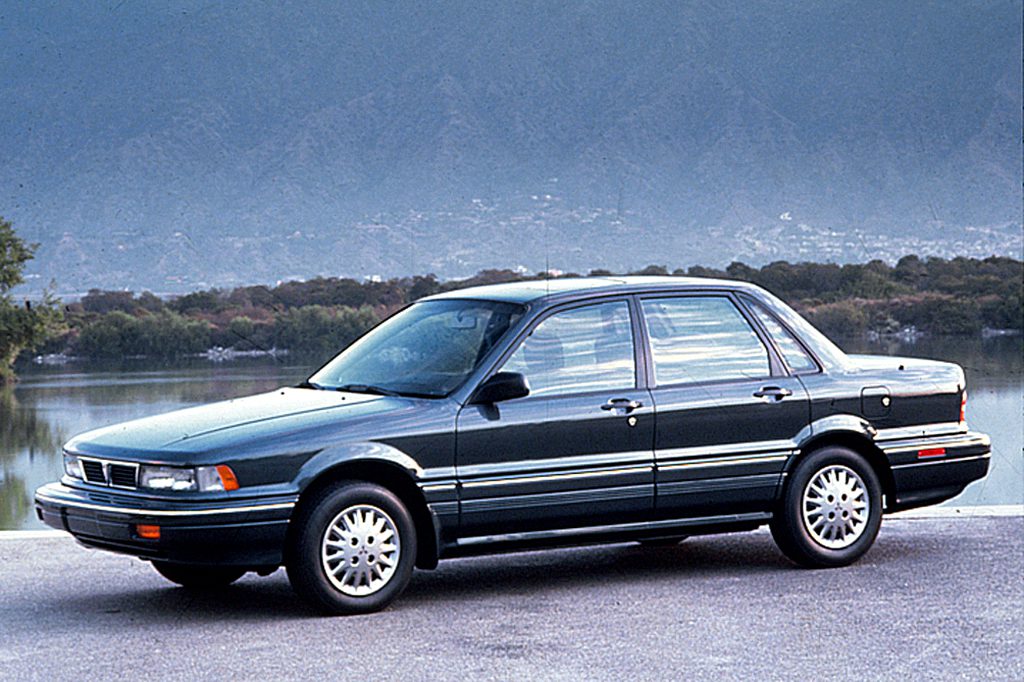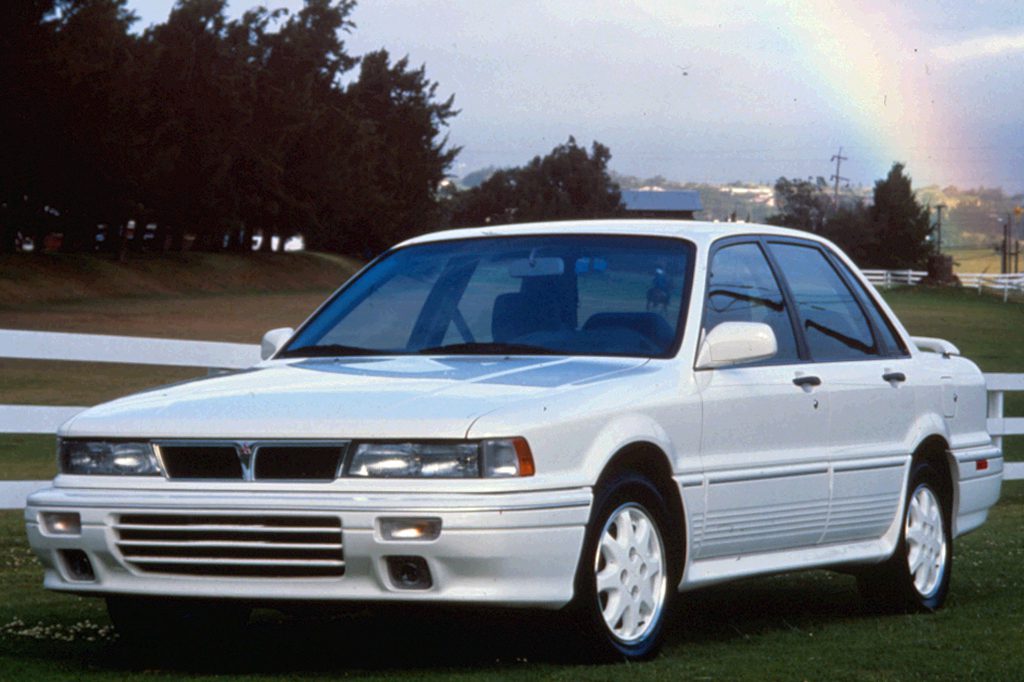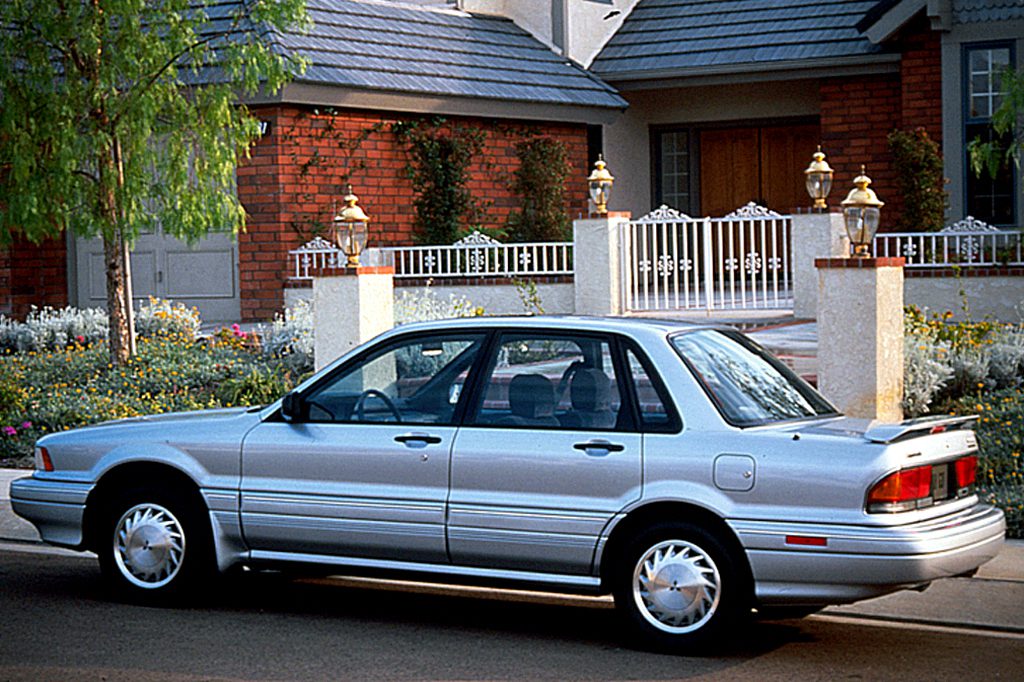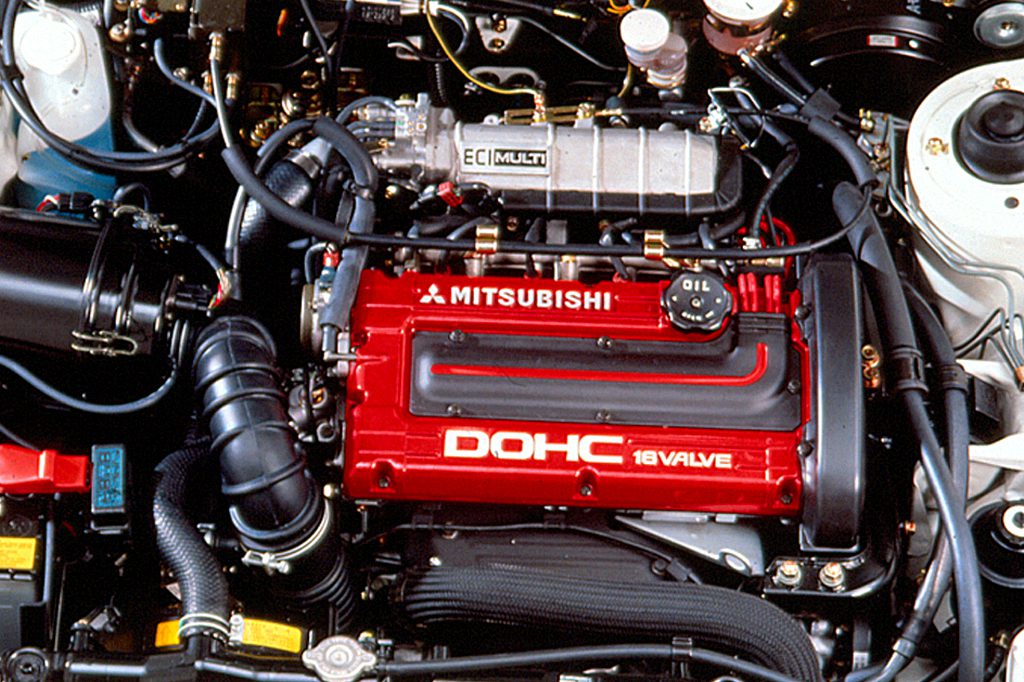| Midsize car; Built in Japan |
|
|
| Good condition price range: $1,000 – $1,800* |

1991 Mitsubishi Galant GS

1991 Mitsubishi Galant VR-4

1992 Mitsubishi Galant GS

1991 Mitsubishi Galant interior

1991 Mitsubishi Galant engine
| Pros: |
|
| Cons: |
|
We rate the early ’90s Galant highly, and still consider it an exceptional value when compared with same-year Accords and Camrys.
Overview
Galant was Mitsubishi’s answer to the Honda Accord and Toyota Camry. At its introduction, base models offered a 102-horsepower, 2.0-liter 4-cylinder mated to a 5-speed manual. Galants in LS trim dropped the manual for a 4-speed automatic. The sporty GS model and all-wheel-drive GSX came with a twin-cam, 135-horsepower version of the same 2.0-liter engine, electronically controlled suspension, plus 4-wheel disc brakes and available antilock brakes.
Yearly Updates
| 1991 Galant The big news for 1991 is the arrival of the high-performance Galant VR-4 model. It replaces the GSX as the Galant flagship. The GSX returns, but drops its 5-speed in favor of a 4-speed automatic. The VR-4 adds a more advanced 4WD system, similar to the one used in Mitsubishi’s 3000GT, and adds a 195-horsepower turbocharged engine, 5-speed manual transmission, 4-wheel steering, leather interior, and bold exterior trim. Another new model, the GSR, is also added. It features front-wheel drive, and the twin-cam 135-horsepower 4-cylinder mated to the 5-speed manual, electronic suspension, and antilock brakes. Finally, Mitsubishi added a new grille and taillamps to help provide a fresh new look. |
| 1992 Galant With the arrival last year of the VR-4, Mitsubishi decided to drop the 4WD GSX model for 1992. The remaining four models receive a mild freshening inside and out. The twin-cam 2.0-liter that powers both GS and GSR models now provides 144 horsepower, up from 135 last year. |
| 1993 Galant The 1993 Galant gives some notable changes for its fourth year in its present form. The slow-selling VR-4 is discontinued. Last year’s sporty GS and GSR have been combined for 1993 into a single LS model. Last year’s midlevel LS has been renamed the ES, but provides roughly the same equipment. The base Galant now is designated as the S model. All receive a revised version of the 2.0-liter 4-cylinder. The new unit is fitted with internal balance shafts and is now a 16-valve unit with power increasing from 102 to 121 horsepower. |
